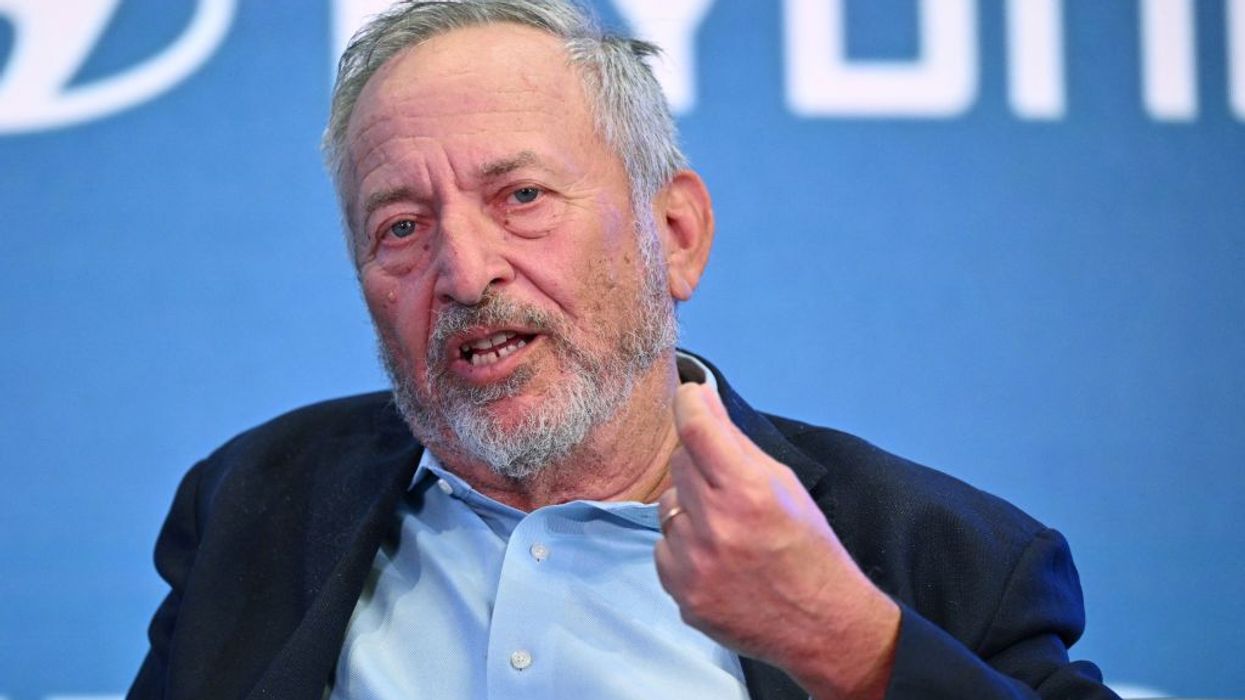How the Hell Did We Get Here?
The sad and depressing answer is a Democratic Party that forbids itself from truly standing on the side of the working class against the rich and powerful corporations. And until that mindset is defeated, things are only likely to get worse and worse.
Somalis are garbage! Deport a college student during a trip home for Thanksgiving! Pardon the Honduran ex-president convicted of drug peddling! Kill survivors from an unarmed boat the Navy has bombed in the Caribbean! Turn against Canada, our number one ally! Threaten to take over Greenland! Sell out the Ukrainians to the Russian invaders!
And there’s a good chance, a very good chance, the worst is yet to come.
How did we get a president who says these things, does these things? And what are the Democrats doing about it?
Not much. A record speech in the Senate by Corey Booker. Another in the House by Hakeem Jeffries. And of course there is self-righteous outrage over the Jeffrey Epstein files. The only new substantive issue is “affordability,” and it came from Zohran Mamdani, a democratic socialist. The Democratic Party's strategy appears to be to lie low, let Trump wreck the country, and then hope to win enough House seats to stop him during his last two years. Let’s hope that works, but we should be worried, very worried, even though recent elections have shown increasing voter dissatisfaction with the Republicans.
What’s worrisome about the Dems is the mindset of believing that the system, overall, was working just fine until Trump came along. Certainly, that was the case for party elites, but it sure wasn’t for working people.
Why worry? Because the same party, the same mindset, and the same devotion to wealthy donors are what got us here.
Let’s start with Biden. Liberals and much of the left claimed he was the greatest pro-labor president since FDR, and that his Inflation Reduction Act was the greatest public works program since the New Deal. Well, okay. Everyone is entitled to their opinion and maybe if he’d been able to put a few sentences together, those claims would have proved true, but he didn’t execute and he still shouldn’t have been running for a second term. And the American public knew it. In February 2024, a whopping 86 percent thought Biden, age 81, was too old to run again.
How many Democrats had the courage to say out loud that he shouldn’t run. Very few. How many progressives called for him to step down? Very few. It was a pathetic display of cowardice. No one wanted to offend him, to provoke his wrath and that of his team, to be pushed outside, to have their chances to run in 2028 diminished because they called for him to step aside. As far as I’m concerned, all the 2028 Democratic presidential contenders have blood on their hands for staying silent. They showed zero guts when we needed the big boys and girls to tell Biden to step aside.
It wasn’t until he showed clear signs of decline in the June 2024 debate with Trump that voices were raised. That didn’t take courage. It only took watching the disaster unfold slowly and painfully.
And then came the next debacle—the coronation of Kamala Harris. It was as if the entire party forgot that she had dropped out of the presidential race in 2020 when her poll numbers sank to 3 percent. Think about that for a second. You must be very unpopular to attract so little support. Actually, you have to have no support at all. And yet, she was given the nod in 2024 without a primary challenge?
But Harris was very popular with the Democratic establishment. She didn’t utter a sound that offended the donor class. She was the darling of liberals who believed her gender and mixed ethnic origins gave her nomination special significance. She argued for the “opportunity society,” not for progressive economic populism, and her brother, Tony West, a Wall Steet insider, her campaign’s secret weapon, vouched for whose side she was on. There was no way she could win back the working class from Trump.
What infuriates me still is that the Democratic establishment, and many progressives, did not act on the Trump threat and instead went along with the Biden/Harris train wreck. Given that we had already endured four years of Trump, don’t call this 20-20 hindsight. I sent Biden birthday greetings in November 2023, and begged him not to run.
It’s a sad day when referencing myself makes a point about the cowardice of the Democratic Party. But it’s more than just the failure of nerve. What’s worrisome about the Dems is the mindset of believing that the system, overall, was working just fine until Trump came along. Certainly, that was the case for party elites, but it sure wasn’t for working people.
The vast majority of Democratic politicians, consultants, operatives, and funders do not see a conflict between capital and labor, between their wealthy corporate donors and working people, or between their own wealth and growing inequality. In their ideological universe there is no class conflict. We’re all in this together, no matter what our wealth, our education, or our level of job insecurity. Runaway inequality may be a concern, but it is not viewed as an existential problem that is ripping our country apart.
Instead, the Democrats who control the party support policies that avoid progressive economic populism. They’re not interested in government forcing corporations to stop needless mass layoffs, raising the minimum wage, breaking up monopolies, facilitating unionization, and guaranteeing jobs for all. These policies are threats to corporate interests and therefore discouraged, no matter what public opinion data shows. You don’t bite the hands that feed your candidacy and, by the way, may provide highly paid jobs for you, your family, and your staff once you leave office.
But none of this is viewed as corruption or a betrayal of the public’s trust. Party leaders really believe that centrist policies will grow the pie for everyone. They cherish the “opportunity society” that gives everyone a fair chance at the American dream. They believe that the capitalist drive for wealth, free of burdensome government controls, will produce the good jobs of the future, and that effective educational policies will prepare working people for them—or at least give their children a shot at success. It’s kumbaya economics, unhinged from recent history and future progressive goals.
We’ve heard all this for more than a generation. This was the justification for deregulating Wall Street; the justification for free trade deals that wiped out millions of industrial jobs; the justification for permitting corporations to lay off workers to pay for leveraged buyouts and stock buybacks while avoiding taxes; and the justification for public-private partnerships that enriched the private partners at taxpayer expense.
Nearly all the members of the Democratic Party establishment, as Bernie Sanders so often points out, are wealthy and really have no clue about what working people are experiencing:
It’s state after state after state. The Democratic Party has abdicated—they’ve given up. They’re not fighting for the working class. What the Democratic Party has been is a billionaire-funded, consultant-driven party—and way out of touch with where the working class of this country is.
I fear that unless this corporatist mindset changes substantially, the Democrats will fail yet again in the new year, although I am praying for the Republicans to lose in the midterms. I’m afraid to even think of the harm a lame duck Trump will do in his final act, especially to the most defenseless among us. And of course, that assumes he doesn’t find a way to continue, heaven forbid.
Happy Holidays!


